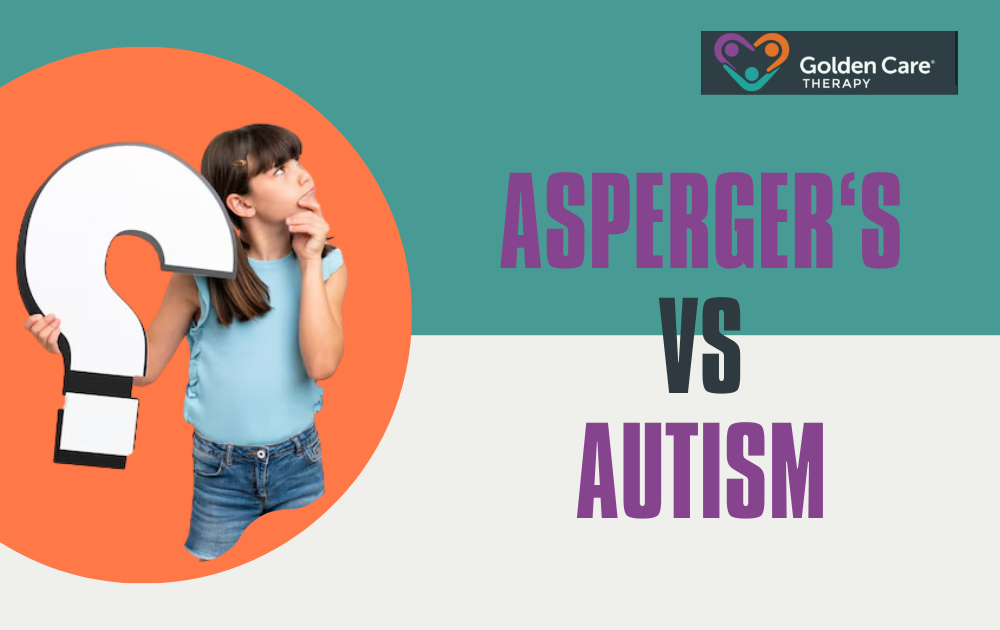In recent years, the term Asperger’s Syndrome has faded from medical vocabulary and was replaced by the broader label of autism spectrum disorder (ASD). This shift has sparked curiosity, confusion, and a wave of questions among individuals, families, and even professionals.
Why has Asperger’s, a name that held significant meaning and identity for many, been absorbed into the more encompassing diagnosis of autism?
Here, we’re going to unravel the reasons behind this change to offer a glimpse into the evolving understanding of autism, the quest for more precise and inclusive diagnostic criteria, and the ongoing efforts to better support and recognize the diverse experiences of those on the spectrum.
Why is Aspergers Now Called Autism?
In 2013, with the publication of the fifth edition of the American Psychiatric Association’s Diagnostic and Statistical Manual of Mental Disorders (DSM-5), the diagnostic landscape for autism underwent a notable transformation. The primary motivation behind this change was to eliminate the misconception that Asperger’s syndrome was a distinct condition separate from autism.
Due to this, the term “Asperger’s syndrome” was retired as an official diagnosis.
The decision to retire the term aimed to unify various autism-related disorders under a single diagnostic category, autism spectrum disorder (ASD). This change was driven by a growing understanding that autism exists on a spectrum, which encompasses a diverse range of symptoms and support needs.

The Implications of These Changes
With the integration of Asperger’s syndrome into the broader autism spectrum, individuals who previously received a diagnosis of Asperger’s syndrome now receive a diagnosis of autism spectrum disorder (ASD). However, it is important to note that the level of support needed can vary among individuals within the autism spectrum.
Under the DSM-5 criteria, autism is now classified into three levels based on the level of support required:
- Level 1 – Autism with low support needs
- Level 2 – Autism with moderate support needs
- Level 3 – Autism with high support needs
The DSM-5 changes have brought about a more comprehensive and inclusive understanding of autism. Considering all autism-related disorders as part of the autism spectrum allows for better recognition of the diverse range of experiences and support needs among individuals on the spectrum.
Understanding the evolution of diagnostic terminology and the impact of DSM-5 changes provides a foundation for comprehending the transition from Asperger’s syndrome to autism spectrum disorder. It reinforces the notion that autism is a spectrum condition.
Diagnosis Criteria and Support Needs
The shift from Asperger’s syndrome to level 1 autism spectrum disorder (ASD) is based on the level of support an individual requires. Level 1 ASD indicates that the individual has low support needs. This means that they may require minimal assistance in areas such as social communication, sensory processing, and daily living skills.
The diagnosis criteria for level 1 ASD involve assessing a range of behavioral and social communication characteristics. These criteria include difficulties in social interactions, repetitive behaviors and interests, and challenges in nonverbal communication.
By evaluating these criteria, healthcare professionals can determine an individual’s placement on the autism spectrum and provide appropriate support and interventions.
It is important to remember that the change in diagnostic terminology does not diminish the unique strengths and challenges experienced by individuals previously diagnosed with Asperger’s syndrome. Rather, it reflects an evolving understanding of autism spectrum disorders and aims to promote a more comprehensive approach to diagnosis and support.
Overall, the transition from Asperger’s syndrome to level 1 autism spectrum disorder (ASD) has allowed for a more unified understanding of the autism spectrum and has helped ensure that individuals receive the support and resources they need to thrive.
Gender Disparities in Diagnosis
If we examine the gender distribution of autism spectrum diagnoses, we’ll notice that boys are more likely to be diagnosed with autism than girls. In fact, boys are three to four times more likely to receive a diagnosis of autism spectrum disorder compared to girls.
The reasons behind this gender disparity are still being explored. Some theories suggest that biological and genetic factors may contribute to the higher prevalence in boys. However, it is also possible that gender biases in the diagnostic process and social expectations play a role in the differential rates of diagnosis.
It is important to note that autism can affect individuals of all genders and should not be overlooked in girls or non-binary individuals. Greater awareness and understanding of the unique presentation of autism in different populations can help promote early detection and provide appropriate support and interventions.
Educational and Career Trends
When it comes to educational and career trends, individuals with autism, including those who were previously diagnosed with Asperger’s syndrome, exhibit unique patterns and face both challenges and opportunities.
Let’s explore the focus on STEM subjects and academic success, as well as the employment challenges and opportunities they may encounter.

STEM Focus and Academic Success
Studies have shown that individuals with autism spectrum disorder (ASD), including those with a previous diagnosis of Asperger’s syndrome, often display a strong inclination towards STEM (science, technology, engineering, and math) fields.
In fact, young adults with autism are more likely to choose STEM majors compared to those without ASD or with different disabilities.
Children with ASD and average IQ levels also tend to demonstrate higher levels of success in mathematics compared to their peers without ASD in the same IQ range. This affinity for STEM subjects can be attributed to their logical thinking, attention to detail, and ability to focus on specific areas of interest.
Educational institutions and support networks have recognized this trend and are increasingly providing accommodations and resources to help individuals with autism succeed in STEM-related fields. These efforts include specialized programs, individualized education plans, and targeted support services to enhance their learning experiences and foster academic achievement.
Employment Challenges and Opportunities
While individuals with high-functioning autism, previously diagnosed with Asperger’s syndrome, possess unique talents and strengths that can contribute to the workforce, they also face specific challenges in finding and maintaining employment.
In 2021, the unemployment rate for autistic adults was alarmingly high at 85%.
The challenges faced by individuals with high-functioning autism in the job application process are primarily related to difficulties in social skills, communication, and behavior management, which can impact job interviews.
However, with the right support, understanding, and accommodations, these challenges can be mitigated, and individuals with autism can thrive in the workplace.
Employment opportunities for individuals with autism are diversifying, with more companies recognizing the value of neurodiversity in their workforce. Some organizations are actively implementing inclusive hiring practices and providing supportive work environments to accommodate the unique needs of individuals with autism.
These initiatives promote equal opportunities, foster diversity, and tap into the talents and strengths of individuals with high-functioning autism.

Differentiating Autism from Other Conditions
Diagnosing Asperger’s syndrome, or autism, can sometimes be challenging as it may share certain characteristics with other conditions such as ADHD, OCD, or ODD. However, there are specific criteria that help distinguish ASD from these conditions.
One key aspect in differentiating ASD from other conditions is the presence of persistent and impairing social communication and interaction deficits. These deficits can manifest in difficulties with social interactions, challenges in maintaining conversations, and a limited range of interests or repetitive behaviors.
Additionally, individuals with ASD may display restricted and repetitive patterns of behavior, interests, or activities.
To arrive at an accurate diagnosis, healthcare professionals rely on comprehensive assessments that evaluate an individual’s developmental history, behavioral observations, and standardized tests. These assessments help to identify the unique characteristics of ASD and differentiate it from other conditions.
The shift from Asperger’s syndrome to autism spectrum disorder represents more than just a change in terminology. It also reflects a deeper understanding of the complexities and nuances of neurodiversity.
This evolution in language marks a step forward in fostering greater acceptance, support, and advocacy for all those on the autism spectrum. Together, we can build a world where every person’s differences are not just recognized but celebrated. For more information on ABA programs in NJ, Indiana, Georgia, and New York, contact Golden Care Therapy. Contact us or book an appointment today!



